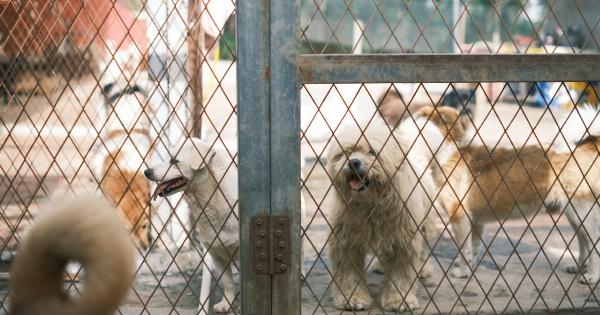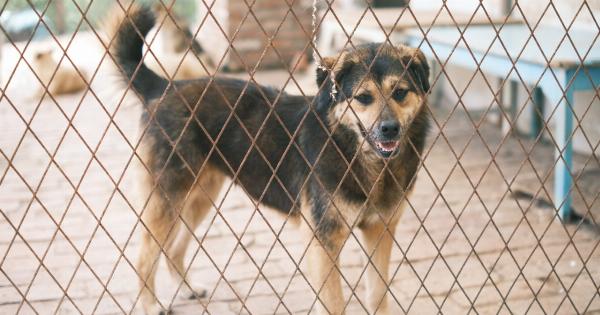Having a dog as a part of the family can bring immense joy and companionship. However, it is crucial to recognize that even the most docile and well-trained dogs have the potential to bite.
Understanding the factors that contribute to a dog’s bite can help pet owners prevent such incidents and promote a safe environment for everyone involved. In this article, we will explore the various elements that may have led to our dog’s bite and discuss ways to mitigate the risk of such incidents in the future.
Breed Characteristics
The breed of a dog plays a significant role in determining its temperament and behavior. Some dog breeds are known to be more prone to aggression or possess stronger protective instincts than others.
While not all dogs of a particular breed will display aggressive behavior, it is essential to be aware of these characteristics when selecting a dog or understand the temperament of an existing pet. Certain breeds may require special training methodologies or more cautious handling to ensure their bite risk is minimized.
Early Socialization
Early socialization is a critical factor in shaping a dog’s behavior and reducing the likelihood of aggression or fear-related biting.
Puppies that have not been adequately exposed to various people, animals, and environments during their crucial socialization period, which is usually between 3 and 14 weeks old, may be more prone to fear or anxiety-driven aggression. It is crucial to expose young puppies to positive experiences and to gradually introduce them to different stimuli to foster a confident and well-adjusted adult dog.
Past Experiences or Trauma
Past experiences, including traumatic events, can significantly impact a dog’s behavior and tendency to bite.
Dogs that have suffered abuse, neglect, or have been involved in prior aggressive incidents may develop fear or defensive aggression as a coping mechanism. Recognizing a dog’s history, especially if it is a rescue or adopted pet, can help owners understand potential triggers that may lead to biting behavior and allow them to take necessary precautions or seek professional behavioral assistance.
Medical Condition or Pain
A dog’s physical well-being can play a significant role in its behavior. If a dog is experiencing pain or discomfort due to an undiagnosed medical condition, it may respond aggressively when approached or touched in a sensitive area.
Pain-induced aggression is often a protective mechanism, as the dog attempts to prevent further discomfort. Regular veterinary check-ups and prompt medical attention for any signs of discomfort are crucial in preventing situations that might lead to a bite.
Territoriality and Resource Guarding
Dogs have a natural instinct to guard their territory or resources, such as food, toys, or even their owners.
This instinct can manifest as aggressive behavior when someone or something encroaches upon their perceived territory or attempts to take away their valued possessions. Understanding and managing a dog’s territorial or resource guarding tendencies through training, positive reinforcement, and establishing clear boundaries can minimize the risk of biting incidents.
Lack of Training and Socialization
A well-trained and properly socialized dog is less likely to exhibit aggression or bite. Dogs that have not received adequate training may exhibit behavioral issues or struggle to understand appropriate ways to interact with humans or other animals.
Basic obedience training that includes commands such as “sit,” “stay,” and “leave it” can provide a foundation for good behavior and help prevent situations that could escalate to a bite. Regular socialization with other dogs and people can also help a dog develop proper social skills and reduce the likelihood of aggression.
Stress and Fear
Stress and fear can significantly impact a dog’s behavior and increase the risk of biting. Dogs that are poorly socialized or have not been exposed to various environments may become fearful or anxious in unfamiliar situations.
Stressors such as loud noises, crowded spaces, or sudden changes in routine can also trigger fear-based aggression. Recognizing the signs of stress or fear, such as trembling, panting, or cowering, and removing the dog from the triggering situation can help prevent bites from occurring.
Protective Instincts
Dogs are known for their protective instincts towards their family members, especially children. While this is generally a desirable trait, it can also pose a risk if the dog perceives a threat to its loved ones.
Dogs with strong protective instincts may be more prone to biting behaviors if they sense danger or believe they need to defend their family. Proper training and socialization can help channel these instincts appropriately and reduce the likelihood of aggressive responses.
Warning Signs and Body Language
Dogs often exhibit warning signs or specific body language cues before resorting to biting. These signs may include growling, baring teeth, raised fur, stiff body posture, or direct eye contact.
Understanding and recognizing these warning signals is crucial for pet owners and those interacting with dogs. By learning to interpret a dog’s body language, individuals can take appropriate actions to diffuse the situation, minimize stress, and avoid potential bites.
Parental Responsibility
As responsible pet owners, it is essential to acknowledge our role in preventing dog bites. Proper supervision of interactions between dogs and children, particularly younger ones who may not understand boundaries, is vital.
Children should be educated on how to behave around dogs, including not approaching unfamiliar dogs without permission, not bothering a dog while it is eating or sleeping, and being gentle and respectful when petting or interacting with dogs. By fostering a culture of responsible pet ownership, we can reduce the incidence of dog bites.
Conclusion
Understanding the factors that contribute to a dog’s bite is vital for pet owners to create a safe environment for both their furry friends and others.
Breed characteristics, early socialization, past experiences or trauma, medical conditions, territoriality, training, stress, protective instincts, warning signs, and parental responsibility all play significant roles in a dog’s tendency to bite. By addressing and mitigating these factors through proper training, socialization, and responsible ownership, we can minimize the risk of dog bites and promote a harmonious coexistence between humans and their four-legged companions.


























